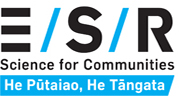These are the questions we are seeking to address in a multi-year research project to ultimately produce a practical model to assess and shape engagement between services and ‘hard-to-reach’ populations in order to improve outcomes for families/whānau.
The research will develop a practical model to enable constructive engagement between services and hard-to-reach populations. That is, develop the necessary knowledge and tools to enable populations to connect to and uptake services. Engaging with the hard to reach is challenging and a dearth of practical models to support client-service engagement. A key challenge in developing a practical model is accounting for the complex ways in which the motivation, knowledge and resources held by families/whānau, service configuration and service provider ecology interact – creating opportunities and barriers for engagement.
For further information see the following research report and case studies:
 Research to improve the up-take of service by people considered hard to reach [PDF, 292 KB]
Research to improve the up-take of service by people considered hard to reach [PDF, 292 KB]
Family Help Trust case study [PDF, 1.6 MB]
He Waka Tapu case study [PDF, 1.3 MB]
Q-nique case study [PDF, 850 KB]
